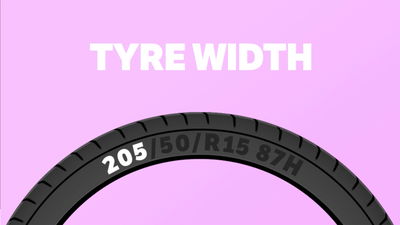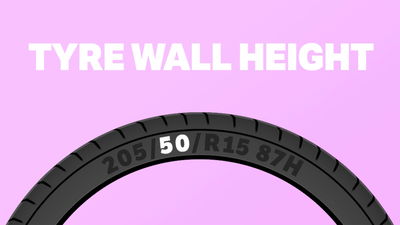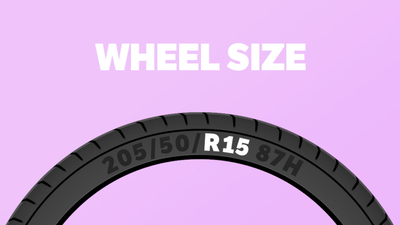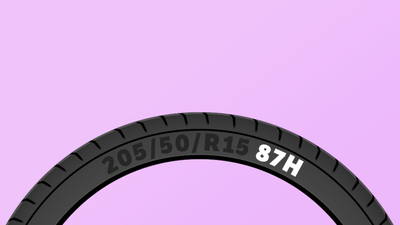Let’s face it, unless you’re one of those weird car nerds (like us), nobody really thinks too much about tyres. They go on your car, you probably want some good ones and that’s about all there is to them, right?
Yet, it only takes a moment to look at one to see all sorts of mysterious codes lined along the side of them. To the untrained eye, this could be a load of gibberish but they do have important meanings. We’ve put together a guide to help you understand them.
Tyre width

Usually, tyres will have three numbers close but separated on them. The first of those numbers indicates the width of a tyre in millimetres. In our example, that means this one is 205mm wide.
Tyre sidewall height

So that must make the second number the height of the tyre’s sidewall in millimetres too, right? Well, no.
Instead, the second number indicates the height of the tyre relative as a percentage of its width. This example means the sidewall is 50 percent as tall as the tyre is wide, so 102.5mm.
Wheel size

The third part of the markings usually sees a two-digit number following on from a letter. In our example, an R15.
We’ll start with the number, as that simply indicates the size of the wheel the tyre is designed to fit, measured in inches. In our case, that’d be a 15-inch wheel – suggesting we’ve got something for an old French car, probably. Be surprised to see anything less than 17 or 18, and more likely in excess of 20, on new cars.
The letter before that number tells us the construction of the tyre. On pretty much any road car made in the last 50 years, this will be an R, meaning ‘Radial’.
Other possible ones include B for ‘Bias’ (you may see these on some modified hardcore off-roaders), D for ‘Diagonal’ or, if there’s nothing, cross-ply. The latter two would only really be seen on classic cars though, and even then, many will now use modern radials.
Load and speed rating

Following the three separated numbers, it’s possible you may see another number followed by a letter. This indicates the load and speed that the tyre is rated for, although it’s not an obvious one to understand.
The number stands for the amount of weight each tyre can carry, although rather than signifying a measurement on its own, this uses an industry-accepted code. In our example, this is 87 – which means the tyre can bear 545kg. Confusing, right?
Then there’s the speed rating. These start from F and go through to Y (and then (Y) instead of Z for… reasons), each again an industry code representing a speed in kmh. In our case, H means the tyre can handle up to 210kmh (130mph).
Got all of that? Good. Enjoy getting up close with the tyres on parked cars for the next few days. Just don’t hang around too long – you might look suspicious.





